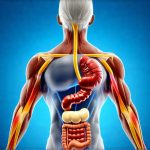The human microbiome – the vast community of microorganisms living in and on our bodies – is increasingly recognized as a pivotal factor influencing overall health. For decades, scientific focus primarily centered around combating harmful bacteria; however, research now demonstrates that a diverse and balanced microbial ecosystem is fundamental to optimal physiological functioning. This complex interplay between humans and their microbes impacts everything from digestion and immunity to mental wellbeing and even athletic performance. The composition of this microbiome isn’t static. It’s highly personalized and influenced by a multitude of factors including genetics, diet, geographic location, lifestyle, and crucially, physical activity levels. Understanding how these factors shape the microbiome is essential for unlocking strategies to enhance health and optimize performance across populations.
Recent advancements in metagenomics – the study of genetic material recovered directly from environmental samples – have provided unprecedented insights into microbial communities. This ability to characterize the microbiome without requiring cultivation has revealed substantial differences between individuals, even those living similar lifestyles. What’s becoming increasingly clear is that athletes and sedentary individuals possess distinct microbiome profiles, reflecting the unique demands placed on their bodies and the physiological adaptations resulting from these different lifestyles. These distinctions aren’t merely academic; they have tangible implications for energy metabolism, inflammation, immune function, and ultimately, athletic potential and overall health outcomes. The growing field of sports microbiology is dedicated to unraveling these complexities and harnessing the power of the microbiome to improve performance and wellbeing.
Microbiome Composition Differences: Athletes vs. Sedentary Individuals
Athletes, across a wide range of disciplines, generally exhibit greater microbial diversity compared to their sedentary counterparts. This isn’t universally true – factors like diet can significantly overshadow activity level – but it’s a common trend observed in many studies. Diversity is often considered a hallmark of a healthy microbiome as it provides resilience and adaptability. A more diverse community can better withstand disturbances, such as antibiotic use or dietary changes, and maintain crucial functions. Sedentary individuals often demonstrate lower bacterial richness (the number of different species present) and evenness (the relative abundance of each species). This reduced diversity is linked to factors like decreased fiber intake, higher processed food consumption, and potentially, a less robust immune system due to limited physical stress.
Specifically, research has identified differences in the abundance of key bacterial groups. Athletes often display increased levels of bacteria associated with lean body mass, improved metabolism, and anti-inflammatory effects. For example, Akkermansia muciniphila, a bacterium known for its role in gut barrier integrity → https://vitagastro.com/emptiness-in-the-gut-versus-fullness-of-sensation/, is frequently found in higher concentrations in athletes. Conversely, sedentary individuals may harbor a greater proportion of bacterial groups linked to obesity, inflammation, and impaired glucose metabolism. These differences aren’t simply correlations; intervention studies demonstrating that exercise can shift the microbiome towards a more ‘athletic’ profile support a causal relationship.
The impact isn’t limited to the gut either. Athletes often exhibit altered skin microbiomes reflecting increased sweat production, exposure to different environments (outdoor vs indoor), and potentially, enhanced immune responses in the skin. Similarly, oral microbiomes can differ based on hydration levels, dietary choices (sports drinks etc.), and even breathing patterns during exercise. Recognizing that the microbiome is a holistic ecosystem encompassing multiple body sites is crucial for comprehensive understanding.
Impact of Diet and Training Load
Diet plays an overwhelming role in shaping the microbiome, often overshadowing the effects of exercise alone. Athletes frequently consume diets high in carbohydrates to fuel their activity; however, the type of carbohydrate matters immensely. Complex carbohydrates from whole grains, fruits, and vegetables provide prebiotic fibers that nourish beneficial gut bacteria. Conversely, refined sugars and processed foods can promote the growth of less desirable microbes. A diet lacking sufficient fiber will undoubtedly lead to reduced microbial diversity in both athletes and sedentary individuals, but the consequences may be more pronounced in athletes due to their higher energy demands and metabolic stress.
Training load is another critical consideration. Intense and prolonged exercise can temporarily disrupt gut barrier function – a phenomenon known as ‘gut permeability’ or “leaky gut”. This allows bacterial products (like lipopolysaccharide or LPS) to enter the bloodstream, triggering inflammation and potentially compromising immune function. Athletes undergoing periods of heavy training are therefore more susceptible to gastrointestinal distress and illness. However, consistent moderate exercise appears to strengthen the gut barrier → https://vitagastro.com/digestive-impacts-of-fast-versus-slow-eating-in-people-with-functional-disorders/, over time, promoting a healthier microbiome and reducing inflammation. This highlights the importance of periodization in training – balancing high-intensity phases with adequate recovery periods.
Finally, hydration status significantly impacts microbial composition. Dehydration can alter gut motility (the movement of food through the digestive tract), leading to changes in bacterial populations. Athletes need to prioritize adequate fluid intake, especially during and after exercise, to maintain a healthy gut environment. Electrolyte imbalances, which are common with intense sweating, can also indirectly affect microbiome function. Considering how carbonated drinks → https://vitagastro.com/why-carbonated-drinks-caffeine-and-alcohol-worsen-indigestion-and-nausea-in-some-individuals/ can further impact hydration is important too.
The Role of Short-Chain Fatty Acids (SCFAs)
Short-chain fatty acids (SCFAs) are metabolic byproducts produced when gut bacteria ferment dietary fiber. These compounds – including acetate, propionate, and butyrate – are not merely waste products; they’re vital signaling molecules that exert profound effects on human health. SCFAs provide energy for colon cells, strengthen the gut barrier, reduce inflammation, and even influence brain function. Athletes generally produce higher levels of SCFAs compared to sedentary individuals due to their increased fiber intake (often necessary to support high energy demands) and potentially, a microbiome better equipped for fiber fermentation.
Butyrate is particularly important for athletes as it’s the primary fuel source for colonocytes – the cells lining the gut. A healthy population of butyrate-producing bacteria contributes to improved gut barrier integrity, reducing the risk of ‘leaky gut’ during intense exercise. Propionate also plays a role in glucose metabolism and can improve insulin sensitivity, potentially enhancing energy utilization. Acetate has been linked to appetite regulation and may help athletes maintain optimal body composition.
Promoting SCFA production is therefore a key strategy for optimizing athletic performance and recovery. This can be achieved through dietary interventions – increasing fiber intake from diverse sources (fruits, vegetables, whole grains, legumes) – and potentially, prebiotic supplementation. However, the response to prebiotics varies significantly between individuals based on their existing microbiome composition, emphasizing the need for personalized approaches.
Immunomodulation and Athlete Health
The gut microbiome plays a central role in educating and modulating the immune system. Approximately 70-80% of the immune cells reside in the gut, constantly interacting with microbial metabolites and antigens. Athletes experience unique immunological challenges due to the physiological stress imposed by intense training. This can lead to temporary immunosuppression, increasing their susceptibility to upper respiratory tract infections (URTIs). A robust and diverse microbiome helps mitigate this risk by strengthening innate and adaptive immunity.
Athletes with a more balanced microbiome tend to exhibit enhanced immune function, experiencing fewer URTIs and faster recovery times. Specific bacterial groups – such as Lactobacillus and Bifidobacterium – are known for their immunomodulatory properties, stimulating the production of antibodies and enhancing natural killer cell activity. The SCFAs produced by gut bacteria also contribute to immune regulation by dampening inflammatory responses and promoting tolerance.
Conversely, a disrupted microbiome (dysbiosis) can lead to chronic inflammation, impaired immune function, and increased risk of injury. Athletes pushing their bodies to the limit are particularly vulnerable to these effects. Strategies to support a healthy microbiome – including optimized diet, stress management, adequate sleep, and potentially, targeted probiotic supplementation – are therefore crucial for maintaining athlete health and preventing illness. It’s important to note that probiotic use should be individualized based on an individual’s specific needs and microbiome profile → https://vitagastro.com/the-role-of-gut-microbiome-in-food-sensitivity/, as not all strains are equally effective. Understanding the relationship between gut microbiome diversity → https://vitagastro.com/the-role-of-gut-microbiome-diversity-in-stool-quality/ and immune function is key to athlete wellbeing. Finally, considering pancreatic health risks → https://vitagastro.com/pancreatic-health-risks-in-sedentary-lifestyles/ in sedentary athletes can help optimize overall wellness.


















